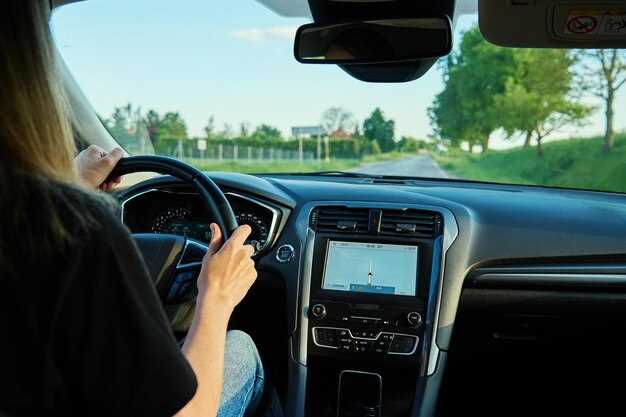
Adaptive Cruise Control (ACC) is an advanced driving technology that enhances the traditional cruise control system by automatically adjusting a vehicle’s speed to maintain a safe distance from the vehicle ahead. Unlike standard cruise control, which maintains a constant speed set by the driver, adaptive cruise control actively monitors traffic conditions and intervenes when necessary. This crucial functionality allows for a more relaxed driving experience, particularly in heavy traffic or on long highway journeys.
The core principle behind ACC involves the use of various sensors, such as radar and cameras, to detect the speed and distance of other vehicles on the road. When the system is engaged, it continuously evaluates the surrounding traffic and adjusts the accelerator and brake inputs to ensure that the vehicle maintains a safe following distance. This level of control not only enhances safety but also reduces the driver’s workload, allowing them to focus more on the road ahead rather than constantly adjusting the speed.
Despite its many advantages, it is essential for drivers to understand the limitations of adaptive cruise control. While the technology can significantly assist in maintaining speed and distance, it is not a substitute for attentive driving. Factors such as sudden lane changes, unexpected stops, and adverse weather conditions require the driver to remain vigilant and ready to take control of the vehicle. As ACC technology continues to evolve, understanding its functionalities becomes paramount for the modern driver aiming to benefit from the enhanced safety and convenience it offers.
How Radar and Lidar Sensors Enhance Speed Regulation

Adaptive Cruise Control (ACC) systems rely heavily on advanced sensors to maintain safe and accurate speed regulation. Among the most critical components of these systems are radar and lidar sensors, which operate under distinct principles yet serve the same fundamental purpose: enhancing vehicle control and safety on the road.
Radar sensors emit radio waves and measure the time it takes for them to bounce back after hitting an object. This ability allows them to detect the speed and distance of nearby vehicles. By processing this data, ACC can automatically adjust a vehicle’s speed to maintain a safe following distance. This real-time control is crucial in dynamic driving scenarios, where the speed of surrounding traffic may vary significantly.
On the other hand, lidar sensors utilize laser beams to create a detailed three-dimensional map of the vehicle’s surroundings. These sensors provide high-resolution information, allowing for precise measurement of distances and the detection of obstacles. The data collected by lidar complements the information gathered by radar, enabling a more comprehensive understanding of the driving environment. This enhanced awareness allows the ACC system to make informed decisions about speed adjustments and acceleration.
Both radar and lidar sensors contribute to a vehicle’s overall control capabilities. They work synergistically to improve the responsiveness and accuracy of speed regulation. By continuously monitoring the environment, these sensors help prevent collisions and ensure a smoother driving experience. The integration of radar and lidar technology marks a significant advancement in the functionality of Adaptive Cruise Control, making it safer and more reliable for drivers.
Integrating Traffic Conditions for Automated Driving Adjustments

Adaptive cruise control systems rely on sophisticated sensors to monitor real-time traffic conditions. These sensors collect data on vehicle speed, distance to the car ahead, and overall traffic density. By integrating this information, the system can make informed decisions about acceleration and deceleration, ensuring safe and efficient driving.
The integration of traffic conditions involves analyzing inputs from various sensors, such as radar and cameras. Radar sensors measure the distance and relative speed of neighboring vehicles, while cameras provide visual data on lane markings and traffic signals. This comprehensive sensing capability allows the automated system to adapt seamlessly to changing environments.
When traffic conditions change, such as in the presence of heavy congestion or sudden stops, the adaptive cruise control adjusts the vehicle’s speed accordingly. By maintaining a safe following distance, it minimizes the risk of collisions. The system can reduce speed smoothly and timely, enhancing passenger comfort and safety.
Furthermore, the ability to integrate traffic conditions with other vehicle systems, such as navigation, plays a pivotal role. For instance, real-time updates on traffic volumes and road conditions from connected infrastructure can provide additional context, allowing automated systems to make proactive adjustments. This connectivity ensures that vehicles are not merely reactive but also predictive in nature.
In summary, the integration of traffic conditions through advanced sensors is fundamental to the effective functioning of adaptive cruise control systems. These systems enhance driving safety and efficiency by responding dynamically to the complexities of real-world traffic scenarios.
Maintaining Safety Standards in Adaptive Cruise Control Systems
Adaptive Cruise Control (ACC) systems play a crucial role in modern vehicle safety by automatically adjusting a vehicle’s speed to maintain a safe following distance from the vehicle ahead. To ensure these systems operate reliably and safely, manufacturers must adhere to stringent safety standards that encompass various technologies, primarily sensors and control mechanisms.
Sensors form the backbone of ACC systems. These devices, such as radar and cameras, constantly monitor the distance and speed of surrounding vehicles. High-quality sensors enable accurate data collection, which is essential for the system to make informed decisions. For example, a reliable radar sensor can detect vehicles in different weather conditions and at various speeds, ensuring that the ACC system responds appropriately to changes in the driving environment. Regular calibration and testing of these sensors are vital to maintaining their accuracy and effectiveness.
Control algorithms govern how an ACC system interprets sensor data and executes driving commands. These algorithms must be robust and responsive, allowing for seamless acceleration and deceleration while maintaining passenger comfort and safety. Advanced control strategies often incorporate machine learning techniques that help improve system performance over time. However, thorough testing is crucial to validate these algorithms under diverse driving conditions, ensuring they react correctly in scenarios involving sudden stops, merging traffic, or unpredictable pedestrian behavior.
Moreover, compliance with international safety standards, such as ISO 26262, ensures that both the hardware and software components of ACC systems are designed with safety in mind. Adherence to such standards mandates rigorous testing protocols, validation processes, and risk assessments throughout the development lifecycle of ACC technology. By prioritizing safety in both design and implementation, manufacturers can reduce the likelihood of accidents attributable to system failures.
In conclusion, maintaining safety standards in Adaptive Cruise Control systems entails a comprehensive focus on sensor reliability and control efficacy. Ensuring that these components operate within clearly defined safety frameworks is essential for promoting safer driving experiences and advancing the technology in a responsible manner.



